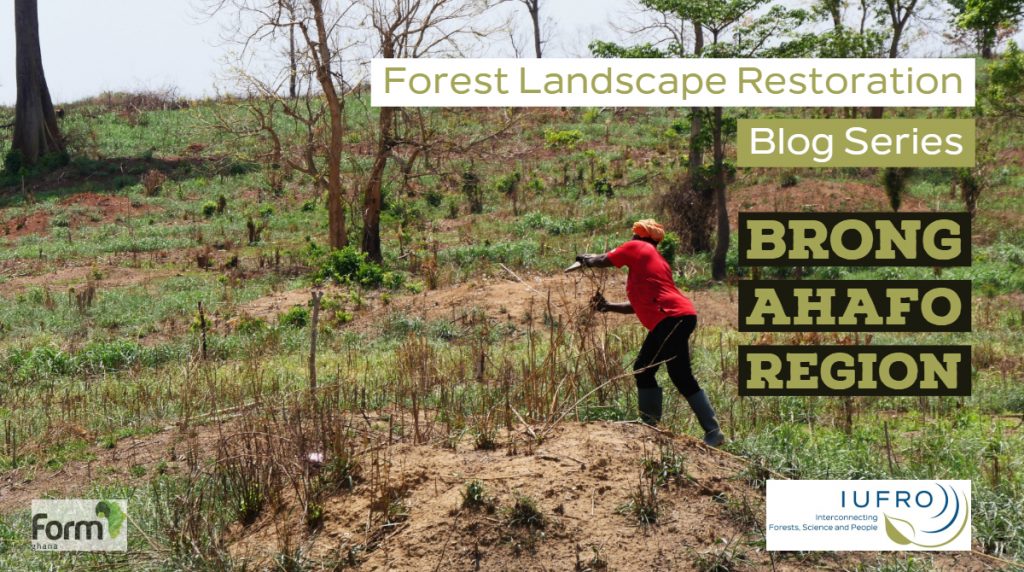Inside the forest. Wind blows. Leaves dance in synchronized movement. Joy with the result of protecting and restoring degraded forests.
“I was directly involved in the land preparation, planting, and maintenance of the trees together with crops,” said one of the female farmer participants of the forest landscape restoration (FLR) project in Ghana.

We are now in West Africa, Ghana, our sixth blog post. The initiative is called Community-based Rehabilitation and Management of Degraded Forests Project (CRMDF), in Pamu-Berekum Forest Reserve, Dormaa Forest District. The project focused on promoting the restoration of a degraded forest reserve through agroforestry – integrating both native and exotic tree species under a Modified Taungya System (MTS).
What’s Taungya System? It’s a form of agroforestry, a temporary establishment of forest plantation with agricultural crops where the crops are grown in the early years of the plantation. The farmers planted plantain, cocoyam, maize and pepper and other vegetables and food crops for three years. After this period, trees need more space to grow, so the farmers stop cultivating the crops. With this arrangement, by the time of harvesting the participants who planted the trees will be entitled to 40% of the revenue from the timber sales.
The need to restore degraded forest lands has been recognized by the local community and the project aimed not only to restore the degraded areas, but also to improve the people’s livelihood. This serves as a motivation for the local people to transform their area and lives. The project provided indirect jobs to local communities through activities such as seedling production, tree planting, and maintenance of plantations. Moreover, it helped in capacity building and sales of non-timber forest products such as medicinal plants, bush meat, and firewood.
Ghana has committed with 2 million ha by 2030 in contribution to the Bonn Challenge – a global effort to bring 150 million ha of the world’s deforested and/or degraded areas into restoration by 2020 and 350 million ha by 2030.
Download the poster: https://www.iufro.org/fileadmin/material/science/spps/spdc/FLR_Snapshot/iwc19-flr-snapshots-poster-ghana.pdf
To find out more about Ghana, watch their interview on the side-event Forest Landscape Restoration Implementation: Progress on the Ground during the XXV IUFRO World Congress 2019.
Check out the other countries to know more about forest landscape restoration.
Coming up next…
Ethiopia: matching project plans, budgets and human capacities is crucial in FLR.

Posted by CAMTEEC LTD on
Very informative